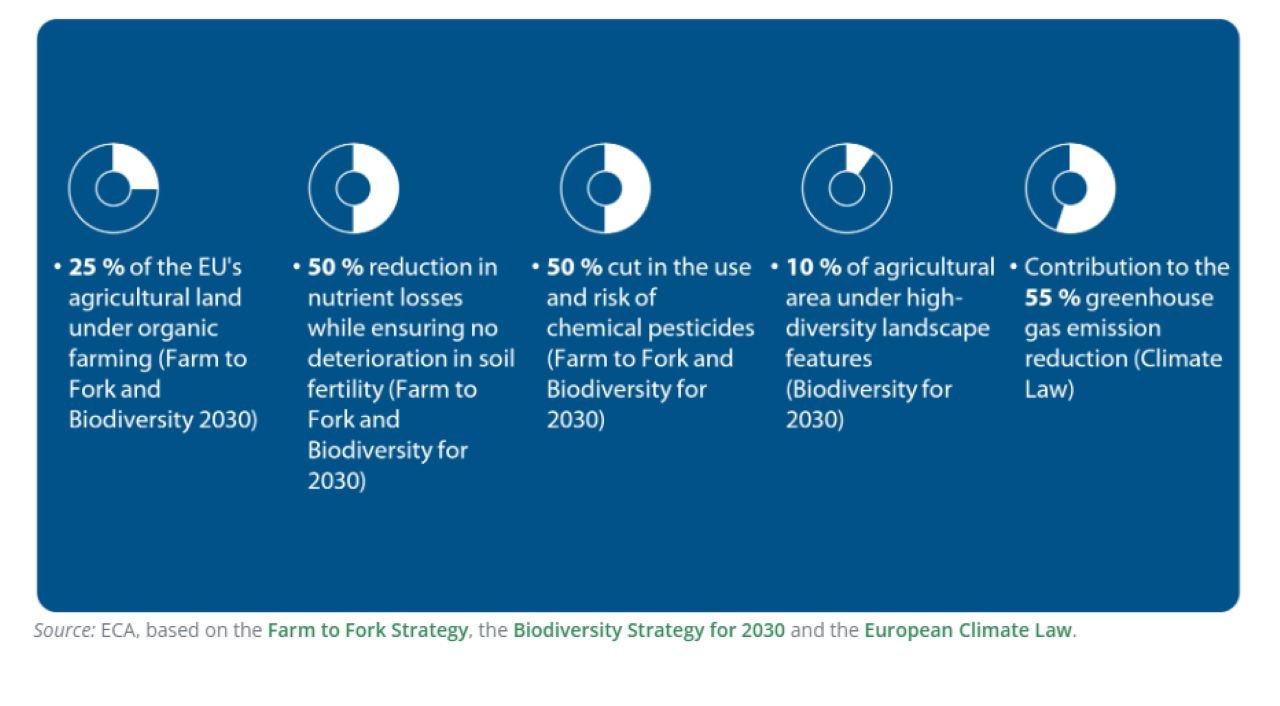- The Common Agricultural Policy has greater environmental and climate ambition, but national plans are not substantially greener
- Green performance is difficult to measure, and depends on the quality of voluntary schemes and uptake by farmers
- In response to farmers’ protests, some funding requirements were relaxed
There is a noticeable gap between the EU’s environmental and climate targets and the agricultural plans drawn up by EU countries. This is the conclusion of a report published by the European Court of Auditors (ECA). The 2023-2027 Common Agricultural Policy (CAP) gave member states the flexibility to reflect the EU’s ambitious green objectives in their plans. All made use of exemptions to agricultural and environmental conditions, while some reduced or delayed the application of the green measures that are required for obtaining EU money. Overall, the auditors conclude that the CAP plans do not show a substantial increase in green ambition.
The €378.5 billion disbursed under the 2021-2027 CAP aims to ensure fair income support for farmers, food security and livelihoods in rural areas, but also to defend the environment against damage and climate change, which can also directly affect agricultural production (e.g. as a result of extreme weather).
“The green design of the Common Agricultural Policy has improved.However, compared with the past, we haven’t seen substantial differences in the member states’ agricultural plans”,said Nikolaos Milionis, the ECA member responsible for the audit. “We conclude that the EU’s ambitions for the climate and the environment are not matched at national level. We also think that key elements for assessing green performance are missing.”
The new CAP introduced more conditions for obtaining EU money, while granting member states more flexibility in applying certain rules. It added eco-schemes – which reward practices that are beneficial to the climate, the environment, and animal welfare – and reconfirmed rural development measures. Both were accompanied by requirements to allocate a minimum percentage of funds to environmental and climate measures, an area where all member states complied. However, the auditors note that the CAP plans are not substantially greener than in the previous period. Moreover, since some conditionality requirements were relaxed (e.g. crop rotation to improve soil quality, which is now optional) in response to farmers’ protests in May 2024, the plans’ green impact may be reduced further.
The auditors also found that the CAP plans are not well aligned with the Green Deal, despite it being one of the EU’s main policies for climate and the environment. The rules do not require member states to include estimated CAP contributions towards Green Deal targets in their agricultural plans. According to the auditors, only the increase in organically farmed land is a measurable target, and the corresponding 2030 Green Deal target seems very difficult to achieve. Their analysis shows that achieving Green Deal targets largely depends on actions outside the CAP.
Furthermore, the auditors underline that the monitoring framework for checking the green performance of the CAP has been simplified, but lacks key elements(e.g. reporting onactions committed to reducing emissions is no indication of an actual reduction). They therefore recommend strengthening the framework, especially by establishing clear targets and result indicators to measure progress.
Background information
The common agricultural policy (CAP) is a key European Union policy area, making up 31 % of the 2021-2027 EU budget. It builds on plans defined by each member state. The CAP is composed of two funds: the European Agricultural Guarantee Fund (EAGF) and the European Agricultural Fund for Rural Development (EAFRD).
Report of the EU Auditors

